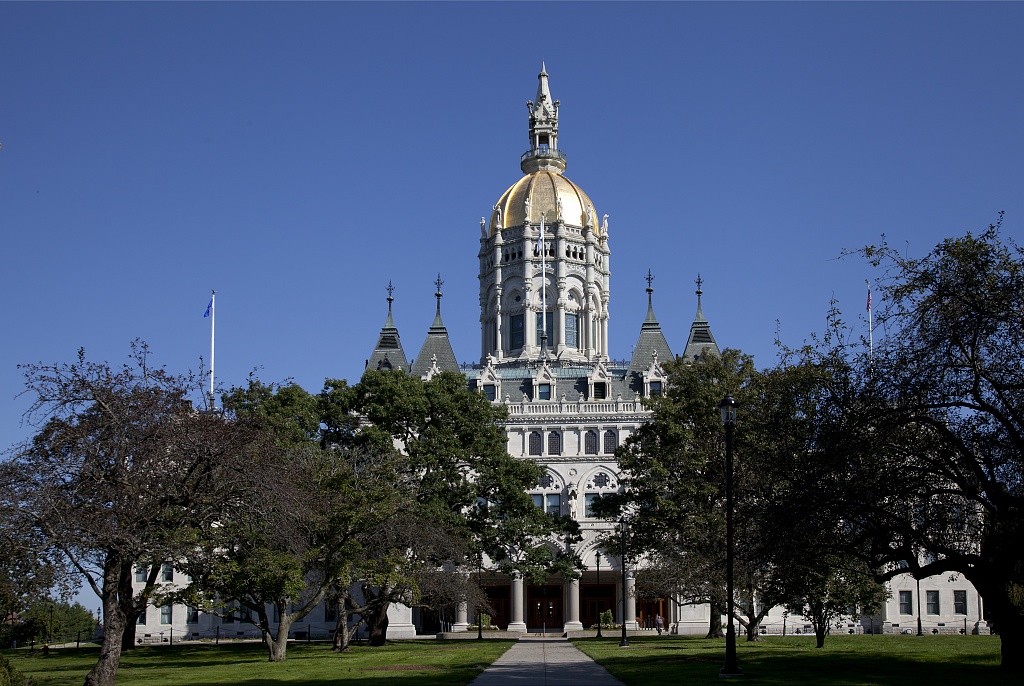
On the issue of tolls, Connecticut Gov. Ned Lamont has shown a stunning lack of leadership. He hasn’t just made mistakes, he’s made nothing but unforced errors. His rudderlessness has been so complete that it will – and should – give citizens pause about anything he says or does.
First, he went back on a campaign promise. He ran on a trucks-only tolls system that has proved implausible, so he was challenged repeatedly. He asserted he’d get necessary federal approval and raise enough revenue just on trucks to meet the state’s future transportation needs. He dismissed constant questions about his plan’s legality, despite the fact a fierce legal challenge to a trucks-only proposal was raging, and still is, in neighboring Rhode Island.
Then, in his inaugural address, he took a coward’s way out by announcing he would send the legislature two proposals: his trucks-only campaign plan and an all-vehicles plan which, after study, he now favored. Evidently, Lamont believes the buck stops with 187 legislators.
Well, the trucks-only version just faded away. In late February, Lamont sent an all-vehicles tolls bill to the legislature. A mere eight pages long, it manifested precious little study. It wasn’t a plan at all. The governor plopped the entire undertaking into the lap of the Department of Transportation. DOT was mandated to design, fund and operate the system.
At the same time, he released his budget, in which he announced the Special Transportation Fund (STF) was going bankrupt much sooner than expected, and asserted tolls were the only way to rescue it. Yes, the STF was going broke, but only because Lamont was bankrupting it. His budget proposed to divert $1.2 billion in car-sales-tax revenue that his predecessor and fellow Demo-crat, Dannel P. Malloy, had committed to the STF. For those who remember the Vietnam War, it was reminiscent of what was said about the city of Ben Tre, Vietnam, after the 1968 Tet Offensive: “It became necessary to destroy the town to save it.”
Then, a closer look at the budget revealed that, under Lamont’s plan, the STF would go bankrupt in 2022, while no meaningful toll revenue would arrive before 2024. So, apparently, DOT was supposed to close down and hang out a “gone fishin’” sign for the intervening two years.
Apparently realizing his blunder, Lamont nevertheless reconfirmed that tolls were the solution, because the state could borrow against future toll revenue to fill the gap. Well, yes, states and municipalities issue revenue bonds that are repaid from future income – future income from existing revenue streams. It is an unconventional idea indeed to borrow against future income from a planned revenue stream.
The further problem with Lamont’s suggestion is that there isn’t even a plan, there may not ever be a plan – and, at best, there won’t be one for an indefinite period of time. Why? Because Lamont is planning to install statewide tolls under a special Federal Highway Administration pilot program exclusively available for toll systems that employ congestion pricing. Connecticut must apply to the FHA to qualify for the program. There is no given timetable for, nor any guarantee of, approval, especially since the eastern sections of Interstates 84 and 95 are seldom congested.
Given the importance of FHA approval, Lamont scurried down to Washington, D.C., recently to visit U.S. Secretary of Transportation Elaine Chao. He emerged to say the meeting went swimmingly. He said Chao spoke about a developing bipartisan consensus in Washington for a major federal infrastructure bill to provide federal funding to cover 80 percent of transportation and other infrastructure projects.
Mighty good news. So good, in fact, that it would eliminate the need for tolls, because 80 percent funding would far exceed the approximately 50 percent federal funding that Connecticut and other no-tolls states receive currently.
Lamont’s serial miscues and continuing mismanagement have dimmed the outlook for passage of a tolls bill considerably, despite the fact Democrats have 60-percent-plus majorities in both houses of the legislature.
Nothing here has been said about the ferocious public opposition to tolls that has developed, nor about Republicans’ competing plan for transportation improvements, their “Prioritize Progress” proposal.
Everything here has been about Lamont’s deficient leadership and his reliance upon good intentions rather than solid plans. We all know how the road to you-know-where is paved. Not only has Lamont left Connecticut’s roads to be paved that way, but he has left them to be tolled that way as well.
Red Jahncke (Twitter @RedJahncke) is president of Townsend Group International, a Connecticut-based business consultancy.
![]()
Red Jahncke is a nationally recognized columnist, who writes about politics and policy. His columns appear in numerous national publications, such as The Wall Street Journal, Bloomberg, USA Today, The Hill, Issues & Insights and National Review as well as many Connecticut newspapers.

